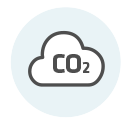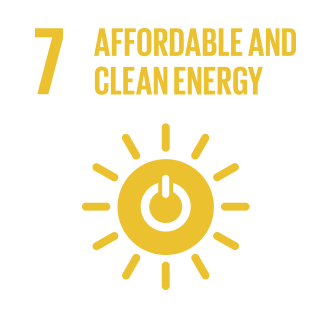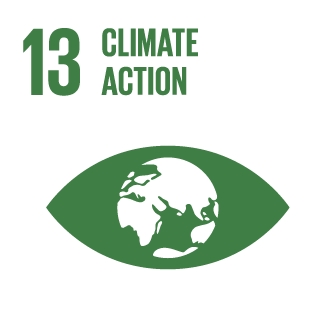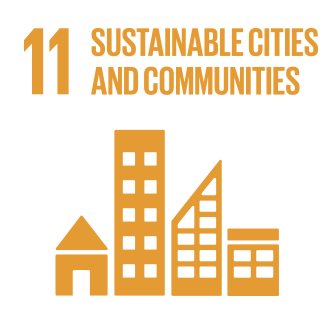One Planet Thinking
We formulated the One Planet strategy to reduce our environmental impact. We concentrate our efforts on those areas in which our impact is greatest: CO2 emissions and use of raw materials and an inclusive society. We are committed to reducing and where necessary compensating for our impact in those areas. At the same time, we seek to increase our positive impact with regard to an inclusive society.
One Planet KPIs
Stedin Group manages its One Planet strategy through key performance indicators (KPIs). The table below shows the KPIs for 2019 and the corresponding results.
CO2 and particulate matter emissions | Target for 2018 | Realisation in 2018 | Target for 2019 | Realisation in 2019 |
|---|---|---|---|---|
Compensation of network losses | 100% | 100% | 100% | 100% |
Reduction of CO2 emissions | -14% | -2% | -9%* | -13%** |
- * reduction target compared to 2018
- * actual reduction compared to 2018
Raw materials | Target for 2018 | Realisation in 2018 | Target for 2019 | Realisation in 2019 |
|---|---|---|---|---|
Develop & calibrate KPI for circular purchasing, including raw materials passport | 100% | 100% | Not applicable | Not applicable |
Purchasing volume of primary assets transparent via raw materials passport | Not applicable | Not applicable | 18.0% | 63.7% |
Inclusieve society | Target 2018 | Behaald 2018 | Target 2019 | Behaald 2019 |
|---|---|---|---|---|
Influx of residence permit holders in work-study programmes for fitters | 10 | 100% | 9 | 90% |
Filling of jobs under Participation Act | 84.5 | 18% | 90.2 | 48% |
Work placement posts for young people (in % of workforce) | >1% | 100% | >1% | 100% |
Help for households to achieve energy savings (via Energy Bank Rotterdam) | 100% | 10% | 100% | 54% |
 CO2 and particulate matter emissions
CO2 and particulate matter emissions
CO2 emissions generated by internal business operations at Stedin Group
Stedin Group complies with the industry-wide agreements on reporting its CO2 emissions. Among other things, these agreements are based on the Green House Gas Protocol. Emissions generated by our internal business operations are divided into three main categories:
- consumption of energy and CO2 equivalents in our accommodation;
- consumption of energy and CO2 equivalents in our mobility, which includes our car use, commuting and business travel;
- CO2 emissions arising from the energy that Stedin purchases for its business operations. The largest contribution within this category comes from our network losses. This energy is lost during distribution which we must purchase.
In this report, we focus on the components that we are able to influence most directly. As Stedin Group, we aim to reduce these components to zero by 2030. By that year, our use of electricity will be entirely sustainable and our vehicle fleet will have switched to either electricity or sustainable hydrogen.
Reduction of CO2emissions generated by internal business operations
We aim to reduce our CO2 emissions as much as possible, advance greening and where necessary offset them.
In 2019, Stedin Group's internal business operations generated CO2 emissions of 13,344 tonnes (13.3 Ktonnes). Compared with 2018, our CO2 emissions decreased by 2,008 tonnes, or13.08%. As a result, we achieved our reduction target of 9%.
In 2018, CO2 emissions in our internal business operations totalled 15.4 Ktonnes.
Total CO2 emissions by Stedin Group
The CO2 emissions generated by Stedin Group in 2019 totalled 304 Ktonnes (2018: 329 Ktonnes).
Besides the CO2 emissions of our internal business operations (13.3 Ktonnes), that figure also includes the emissions from our gas grid (33.3 Ktonnes), generator units (2.2 Ktonnes), our electricity grid (0.5 Ktonnes), purchasing and investments (234.2 Ktonnes), upstream emissions of purchased fuels, electricity and heat (19.2 Ktonnes), and emissions from commuting from our externally hired staff (1.0 Ktonnes).
We provide a detailed overview of the CO2emissions by Stedin Groep in the table at the end of this section.
One Planet procurement policy
We take responsibility for our chain emissions, such as the emissions which occur at our contractors or which arise during the production as well as the transport of the components and assets that we purchase. We take the CO2 footprint as well as other One Planet issues such as material usage and social working conditions in the chain into consideration in our purchasing processes. They form the basis for selecting suppliers. You can read more about this matter in the section on Integrity/chain responsibility.
Compensation of network losses
Each year, Stedin Group compensates 100% of the CO² emissions arising from the electricity that we purchase for our network losses. At the moment, we do so by purchasing Guarantees of Origin (GoO). In the long term, Stedin Group wishes to make the network losses more sustainable by entering into Power Purchase Agreements (PPA). This process involves us purchasing green electricity directly from a sustainable source such as a wind or solar farm. With effect from 2021, we will purchase electricity for 40% of our network losses under a PPA of this type. This figure should be over 80% by around 2030.
Reduction of network losses
When it comes to network losses, prevention is even better than compensation, where possible. In 2019, a survey was carried out to examine the possibilities for using the roof area of our large buildings to install solar panels. Stedin Group selected the stations and technical areas that we will fit with solar panels in the coming years. The selection was based on the roof area, the costs of installation, the energy yield from the solar panels in relation to the station's energy consumption and the technical service life of the stations. Stedin Group's ambition is now to create a total capacity of 7 MWp, spread across roughly 70 stations. These figures may change in response to changing market conditions.
 Particulate matter
Particulate matter
Although particulate matter is one of the four main topics of our One Planet strategy, it does not feature as a separate KPI in the overview. The reason is that particulate matter emissions are largely linked to our grid losses and our mobility. If we raise the sustainability of our grid losses through Power Purchase Agreements and further electrify our vehicle fleet, we will automatically attain our 50% reduction target.
Reduction of CO2 and particulate matter emissions via our mobility
At Stedin Group, mobility is divided into three categories: car use, commuting and business travel. We have a phased approach to making our mobility more sustainable based on the three As of avoiding, adjusting and augmenting the sustainability of what remains.
Our vehicle fleet forms a large part of this process, since Stedin Group has one of the largest commercial vehicle fleets in the Randstad conurbation plus the province of Zeeland. These vehicles emit CO2 and particulate matter. Stedin Group's ambition is to achieve zero carbon emissions for our entire business mobility by 2030, accompanied by a 50% reduction of particulate matter emissions. Since early 2018, we have had a complete fuel ban on all cars with yellow registration plates (including lease cars since January 2019), replacing them with zero-emissions alternatives in due course. This is to be followed by the more than 1,700 large and small commercially registered vans.
2019 saw the delivery of the first electric company van in the province of Zeeland and the response has been positive. It is part of a pilot project involving a total of five vans, in which the experiences of the fitters driving them are closely monitored. In addition to tractive power, the range of the vehicles also plays an important role.
We will increase the sustainability of our commuting. Employees who have a free season ticket for public transport can travel by public transport for business as well as private purposes. More and more employees are taking advantage of this facility. We are also encouraging sustainable alternatives at the same time, such as private lease arrangements for electric cars and a bicycle scheme. Stedin Group participates in the 'Coalitie Anders Reizen' (Travelling Differently Coalition) for more sustainable business mobility. We also participate in the LowCarDiet initiative.
Making car mobility more sustainable
Yellow registration plates by fuel type
Electrification of our smaller category of lease cars (yellow registration plates) is proceeding according to schedule. At present, 14 and 250 of all our business vehicles are hybrid electric and fully electric, respectively. By the end of 2020, we aim to achieve zero emissions for all cars with yellow registration plates, including lease cars.
Commercially registered vehicles by fuel type
The pace of making our vehicle fleet more sustainable depends on the supply of alternatives to carbon-emitting vehicles. This supply continues to lag behind in the case of company vans in particular. These vehicles are heavier and also travel more kilometres. Among other things, several pilot projects involving hydrogen-powered vans are planned in 2020, while we will explore organisational changes that can facilitate efforts to improve the sustainability of this category.
Litres of fuel used and kWh consumption
Generally speaking, we have seen a decrease in the use of fossil fuels and an increase in electric charging. In 2019, we used 1,249,305 litres less fossil fuels (petrol, diesel, LPG) for our commercial and lease vehicles than in 2018.Electric charging of our commercial and lease vehicles increased by 262,633 kWh.
Accommodation
Stedin takes a conscious approach to its real estate. The main impact on our CO2 reduction targets in 2019 came from the disposal of at least six locations, whose operations were transferred to existing buildings. Efficient accommodation practices lead to a smaller footprint for our buildings, as well as indirectly to a reduced mobility flow between the buildings.
To increase sustainability awareness among our employees and visitors, Stedin has fitted out a special meeting facility at our head office in Rotterdam, using existing materials that Stedin also employs in its grid management activities. The facility features a standing table made of gas pipes, partitions made of copper wire, reels as tables, plant pots made of old transformers and many other recycled materials.
Climate-neutral Vlissingen support centre
A pilot project was carried out at Enduris in 2019: one of the regional offices, Vlissingen support centre, was transformed into a climate-neutral building. This result was achieved by installing passive climate ceilings, rendering the old air-conditioning units redundant. Heating is supplied throughout the building by a biomass boiler, replacing the previous system that ran on natural gas. Solar panels were also installed on the roof to compensate for the electricity consumption. Outside, charging stations have been installed for electric cars. We are monitoring closely how people experience the building since the transformation. Going forward, we aim to extend the sustainability policy towards other buildings as well as share this experience in the various knowledge platforms for the energy transition.
Stedin office in Delft much more sustainable
Following extended renovation, we were able to move back into our regional office in Delft at the end of 2019. The renovation has made it possible to double the number of building users. It goes without saying that the premises were renovated in a sustainable way. Instead of wastage, there was extensive reuse of raw materials and energy-efficient building systems were installed. We also used a variety of innovations, such as climate ceilings, thermally activated concrete and special blinds on the building façade to reduce the heat load. The production hall, which is as large as two football pitches, is fitted with LED lighting. The car park has 50 charging facilities that are powered by 1,158 solar panels, among other things.
 Use of raw materials
Use of raw materials
We purchase products such as pipes, cables, meters and transformers. Many raw materials for these products, such as copper, aluminium and plastics, are becoming increasingly scarce and their extraction or production often causes environmental harm. We aim maximise circularity both from a sustainability perspective and for business reasons. We purchase products with as much recycled raw material content as possible, challenge suppliers to deliver products that facilitate maximum recycling after the useful life has expired and work with our waste processors to ensure the highest-grade recycling. This way, we endeavour to take responsibility in different parts of the supply chain.
A socially responsible purchasing policy forms the basis for the selection of the most forward-looking suppliers. Where possible, we include circularity targets in tendering procedures. For instance, circularity and other One Planet issues such as CO2 emissions were specifically taken into account in 2019 in the tendering procedure for switchgear, among other things. In addition, we are working with suppliers to develop more circular products. We request a raw materials passport from suppliers and participate in pilot projects. Examples include the Fair Meter as well as a project in which we are exploring the development and application of more circular cables. With this regard, we jointly review requirements and wishes. We have agreements in place with service providers for the responsible treatment of residue streams; they collect and process these streams for us.
KPI for circular purchasing and the raw materials passport
As from 2019, we will request suppliers to fill in a raw materials passport in tendering procedures for all our primary assets. This serves to ascertain the raw and other materials of which the product consists, how much recycled material it contains and the extent to which the product or material can be recycled after its useful life.
We aimed to have insight into the degree of circularity for at least 18% of our primary assets in 2019. This target has been comfortably achieved. The 16 raw materials passports which we requested from two suppliers mean that we now have data on 63.7% of our primary assets. Based on sector averages and insight into current results, we expect a circularity percentage of 40% to be feasible in 2020. The results are shown in the following figures.
Redeployment of assets
Redeployment of assets is an initiative aimed at professionalising and upscaling the reuse of pipelines as well as transformers, for instance. We store the assets that are returned from the grid. Together with experts from various departments, we then examine what we can reuse. Next, a team of fitters sets to work on reconditioning the asset for further use. After a quality inspection, they can be ordered once again.
This process eliminates the need to throw away our raw and other materials. We also ensure that ageing assets which can no longer be ordered from the manufacturer remain available. Finally, it generates cost savings in the form of avoided purchase costs. We have already made a start on redeploying grid stations and further professionalising the workshop for used transformers. Our ultimate aim is to work with Alliander and Enexis on a platform where all the reconditioned assets are made available for redeployment.
If an asset can no longer be used in its entirety, we ensure that the residual materials are separated in an environmentally friendly way, as far as possible into recoverable raw materials.
Status of request for raw materials passport based on total ordered weight (in kg)
Detailed information on CO2 emissions by Stedin Group
Leakage loss & network losses | 2017 | 2018 | 2019 |
|---|---|---|---|
Leakage loss of natural gas grid | 30.060 tonnes CO2eq | 33.769 tonnes CO2eq | 33.346 tonnes CO2eq |
Electricity grid losses | 417.852 tonnes CO2eq | 427.778 tonnes CO2eq | 426.000 tonnes CO2eq |
Energy intensity ratio = Energy consumption (in GJ) divided by annual revenue (in million €)
GHG emission intensity ratio = Total emissions including greening (in tonnes CO2eq) divided by annual revenue (in million €)
Energy intensity ratio | 2017 | 2018 | 2019 |
|---|---|---|---|
Energy consumption | 209.884 GJ | 219.001 GJ | 180.441 GJ |
Annual revenue | € 1.194 million | € 1.268 million | € 1.234 million |
Energy intensity ratio | 175,8 GJ/million € | 172,7 GJ/million € | 146,2 GJ/million € |
GHG emission intensity ratio | |||
|---|---|---|---|
Scope 1 | 2017 | 2018 | 2019 |
Gas consumption of buildings | 1.247 tonnes CO2eq | 642 ton CO2eq | 457 ton CO2eq |
Leakage loss of natural gas grid | 30.060 tonnes CO2eq | 33.769 ton CO2eq | 33.346 ton CO2eq |
Lease & company cars | 12.062 tonnes CO2eq | 11.708 ton CO2eq | 9.056 ton CO2eq |
Total | 43.369 tonnes CO2eq | 46.119 ton CO2eq | 42.859 ton CO2eq |
Scope 2 | 2017 | 2018 | 2019 |
Electricity/heat consumption of buildings | 546 tonnes CO2eq | 847 ton CO2eq | 192 ton CO2eq |
Electricity grid losses | 417.852 tonnes CO2eq | 427.778 ton CO2eq | 425.084 ton CO2eq |
Total | 421.954 tonnes CO2eq | 432.026 ton CO2eq | 425.276 ton CO2eq |
Scope 3 | 2017 | 2018 | 2019 |
Commuting, business trips, flights | 3.711 tonnes CO2eq | 5.038 ton CO2eq | 4.635 ton CO2eq |
Total | 3.711 tonnes CO2eq | 5.038 ton CO2eq | 4.635 ton CO2eq |
Total | 2017 | 2018 | 2019 |
Total footprint | 469.034 tonnes CO2eq | 483.183 ton CO2eq | 472.770 ton CO2eq |
Greening | -417.568 tonnes CO2eq | -427.300 ton CO2eq | -424.612 ton CO2eq |
Total including greening | 51.466 tonnes CO2eq | 55.883 ton CO2eq | 48.158 ton CO2eq |
Annual revenue | € 1.194 million | € 1.286 million | € 1.234 million |
GHG emission intensity ratio | 43,1 tonnes CO2eq/million € | 43,5 tonnes CO2eq/million € | 39,0 tonnes CO2eq/million € |
Stedin is working vigorously to phase out ‘SF6‘ in its switchgear
SF6 is used as an insulation medium in our high- and medium-voltage switchgear. The gas ensures that electrical arcs formed during switching are quickly extinguished. This property allows the switchgear to remain relatively compact, which is useful when switchgear needs to be installed in a station with confined space. SF6 has a major disadvantage, however: an SF6 molecule has a CO2 equivalent that is 23,000 times greater than a CO2 molecule. As a consequence, SF6 is very harmful if released into the atmosphere. While most switchgear is leak-proof, a limited quantity of SF6 is emitted each year. In 2019 Stedin added 7,57 kg SF6.
Limited alternatives
Stedin aims to cut back its use of SF6 in switchgear. However, the range of alternatives is limited and very expensive, where available. This situation poses a problem for a grid manager committed to investing at the lowest social cost. We are also aware that the considerable expansion and the increased capacity of the electricity grid mean that an increasing amount of SF6 is being used in our grids. Conversely, the increased demand for alternatives will bring down the price of SF6-free switchgear over time.
A first for our new medium-voltage switchgear and a pilot project in Middelharnis
Our ‘One Planet’ thinking means that we are stepping up our efforts to make our business operations more sustainable. An example is the invitation that we extended to bidders in the tendering procedure for our switchgear to tender SF6-free switchgear. By also taking the CO2 footprint into consideration, including SF6 , we opened up the competition to 'more sustainable' switchgear. To cover any additional costs which might arise, Stedin also applied for a subsidy that was available for this technology. The tendering procedure resulted in the selection of two suppliers: Eaton and Siemens. Eaton will supply the SF6-free switchgear. Of the estimated 600 pieces of switchgear that Stedin orders each year, roughly 80% will be SF6-free in the coming years. At 3 kg of SF6 per item on average, we are thereby eliminating the use of approximately 1,500 kg of SF6. This figure is equivalent to around 34,000 tonnes of CO2. The switchgear consists of closed systems, so there is zero likelihood that these emissions would have been released fully into the atmosphere. We nonetheless believe that reducing the use of SF6 as much as possible is the right thing to do. This way, we prevent the risk of emissions occurring and we also send out a message to the market which encourages the development of SF6-free switchgear.
In addition to the successful tender outcome for medium-voltage switchgear, Stedin purchased SF6-free switchgear from General Electric (GE) in 2019. The switchgear was installed in the 50kV distribution substation in Middelharnis last summer. Stedin will take the switchgear into use in early 2020. The installation of this gear is also considered to be a major success. The use of so-called G3 gas means that CO2 emissions are as much as 99% less than SF6 gas-insulated switchgear.
 Inclusive society
Inclusive society
Stedin Group is committed to working for equal opportunities and long-term employability for all. This is described in the section Professionally competent employees now and in the future.
One Planet governance
The Board of Management (BoM) is responsible for the ambitions and objectives that have been formulated for Stedin Group. In 2016, the BoM approved ambitions that provide direction for Stedin Group's sustainability policy towards becoming a climate-neutral organisation by 2030. KPIs have been formulated for the main impact categories – CO2 emissions, use of raw materials, particulate matter emissions and inclusive society – for the business units that have an influence on them. Results on the KPIs are reported to the BoM and the directors of the business units concerned every quarter. A quarterly analysis is also carried out of strategic risks and opportunities, which includes the topic of sustainability. The strategic risk 'excessive environmental impact' is not included in the Risk Management section, as this risk is managed within the defined risk tolerance. One full-time employee is available in the Strategy corporate services department for driving, monitoring and pursuing the continued development of the sustainability strategy within Stedin.
Sustainability rating
Leading rating agency ISS ESG gave us a 'B' rating for sustainability in 2019. This prime rating sets us apart as one of the top performers in our sector.
First-time issue of green bonds by Stedin Group
Stedin Group issued green bonds for the first time in its history during 2019. A green bond is a type of bond that is used in order to raise money for environmentally friendly projects. Green bonds are similar to traditional bonds in terms of deal structure. Their pricing is the same and they are traded in the regular manner on the stock market.
Stedin Group has put together a selection of green projects for which it has issued a green bond. The money raised is invested in connecting charging points for electric transport, sustainably refurbishing our office buildings, rolling out smart meters and making sustainable investments in our grid. This latter category covers connections of large wind and solar farms as well as investments that facilitate a greater input of sustainable energy. Bonds were issued for a total amount of 500 million euros. Stedin Group has committed to reporting on how the money raised is used across the specific projects.
The issue of green bonds is a significant milestone for Stedin Group. Investors are increasingly asking for proof of the sustainable goals that we have set for 2030. By issuing green bonds, Stedin Group is underlining its commitment to sustainable business operations by linking investments directly to sustainable projects. Stedin Group will continue to explore opportunities for green financing into the future, based on the Green Finance framework, which is available on our website.
Green Bond categorie en mogelijke duurzame projecten | Geschatte | Relatie |
|---|---|---|
Renewable energy Projects aimed at:
| 28.1 |   |
Energy efficiency | 64.6 |  |
Climate-neutral mobility | 2.6 |  |
Low-carbon buildings | 4.7 |  |
Sponsorship/Good causes
Stedin supports a number of sustainable initiatives that are closely aligned with its own mission and strategy. One example is 'Studio Energie'. This podcast encourages an open dialogue on sustainability in society. Investigative journalist Remco de Boer interviews a different energy specialist from a particular sector each time, leading to a discussion of various topics and positions.
The collaboration between Stichting Samen 010 (which also covers Energy Bank Rotterdam) and Stedin was continued in 2019. This foundation helps families that live at or around subsistence level, who often have difficulty paying their energy bills and controlling their energy consumption. 'Energy coaches', including Stedin employees, help them to reduce their energy costs and prevent their power from being cut off. An additional advantage is that CO2 emissions are also reduced as a result. Stedin also entered into a partnership with Energy Bank The Hague in 2019. For their Christmas present this year, Stedin employees had the option of donating their allowance to the Energy Bank. Stedin has rounded up the amount, resulting in a nice donation of € 5,000. This amount is divided between the Energy Bank Rotterdam and The Hague.
Raising awareness about sustainable energy among young people is a priority for Stedin. The same can also be said for the topic of 'Technology', prompting Stedin to support the National AI programme. Artificial intelligence has long ceased to be science fiction. However, despite the impressive developments, the technology behind AI is still in its infancy. By engaging the wider community, particularly young people in senior secondary vocational (MBO) education, AI can become a technology that all of us both provide and receive. Furthermore, the National AI programme is an ideal stepping stone for people wanting to learn more about the issues surrounding this fascinating subject.
Aside from the collaborations referred to above, 20 Stedin employees took part in the Laurentius Dinner at the Laurenskerk church in Rotterdam on Saturday, 5 October. This biennial dinner is organised to focus on poverty in the city of Rotterdam. Together with 80 other volunteers, our colleagues served dinner to more than 600 people who rely on the food bank or who live in social isolation.
Stedin's total sponsorship budget in 2019 was € 120,000, part of which was also used for community initiatives and good causes in which individual Stedin employees played an active role. The sponsorship budget was € 175,000 in 2017 and € 225,000 in 2018.
‘Missie H2’, an alliance of six leading Dutch companies in the energy supply chain, has entered into a partnership with TeamNL. Under the 'Missie H2' banner as well as in partnership with TeamNL, Gasunie, Shell Netherlands, Remeha, Stedin Group, Port of Amsterdam and Groningen Seaports are joining forces before as well as during the Tokyo 2020 Olympic and Paralympic Games to promote hydrogen as an important as well as sustainable energy carrier for the near future. Taking its name from the hydrogen molecule H2, 'Missie H2' is also supporting TeamNL en route to the Tokyo 2020 Olympic Games at the same time. Stedin Group is participating in 'Missie H2' with the aim of making the Netherlands even more familiar with the benefits of hydrogen and showing how it can be used as an alternative to natural gas for heating homes, while retaining the current gas grid.
Waste (in kg)
The table below shows the amount of waste from Stedin Netbeheer.
Waste | 2017 | 2018 | 2019 |
|---|---|---|---|
Total waste by type | 6,400,386 | 8,588,912 | 9,576,136 |
Total waste disposal recycled | 5,831,399 | 7,755,969 | 8,623,144 |
Total waste disposal non-recycled | 568,987 | 832,943 | 952,992 |
% waste non-recycled | 9% | 10% | 10% |
Total asbestos | 487,730 | 771,930 | 718,550 |
% share asbestos in non-recycled | 86% | 93% | 75% |
